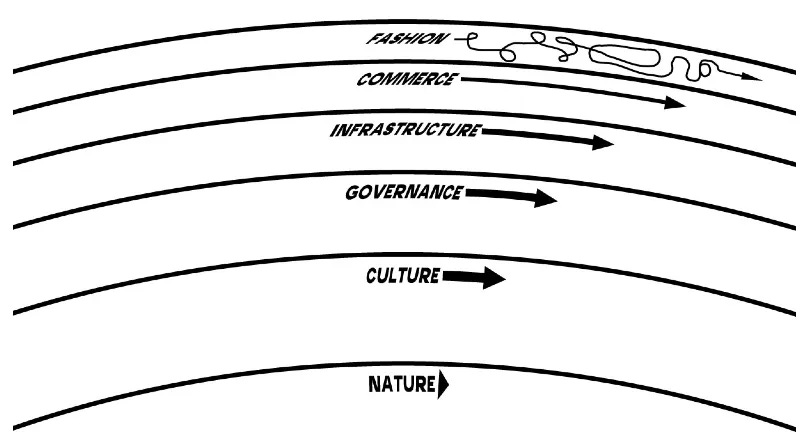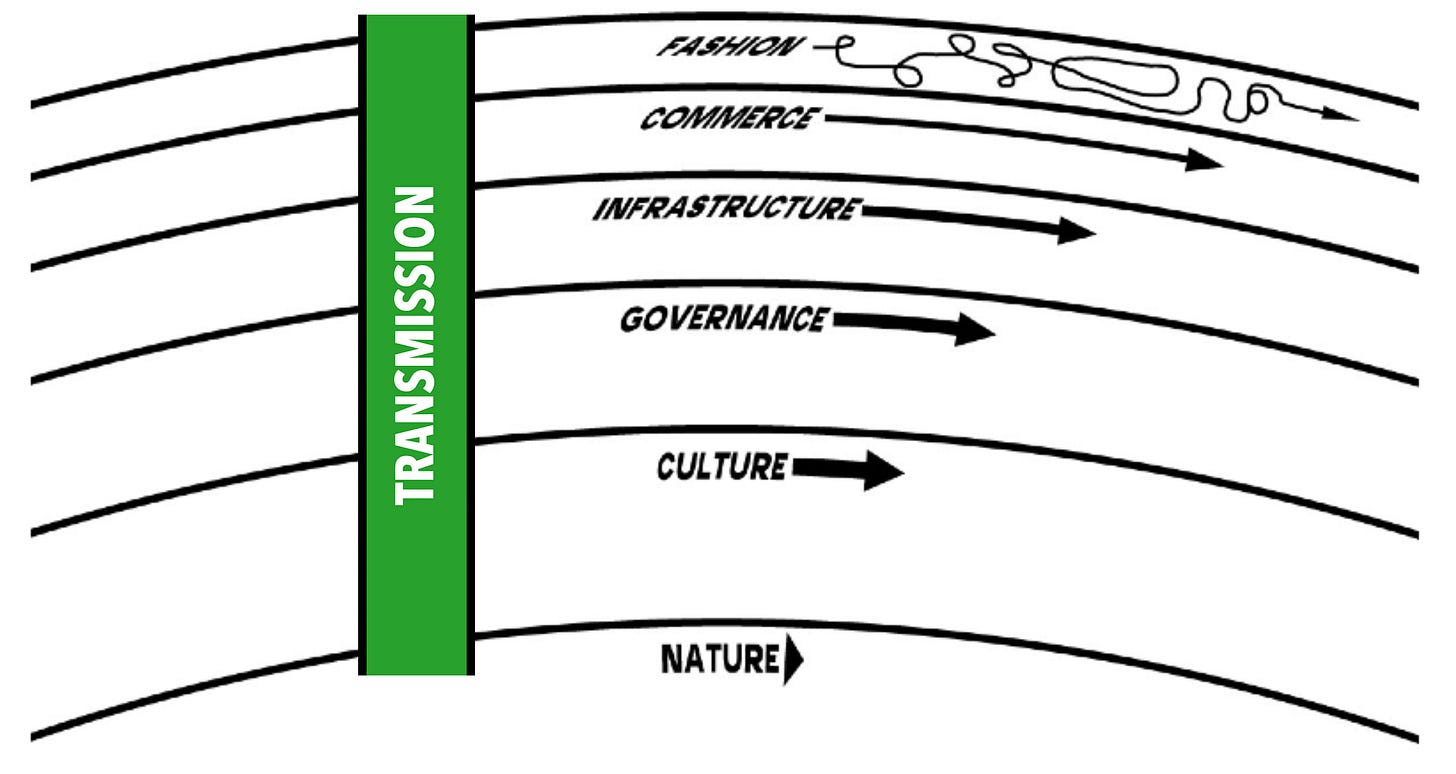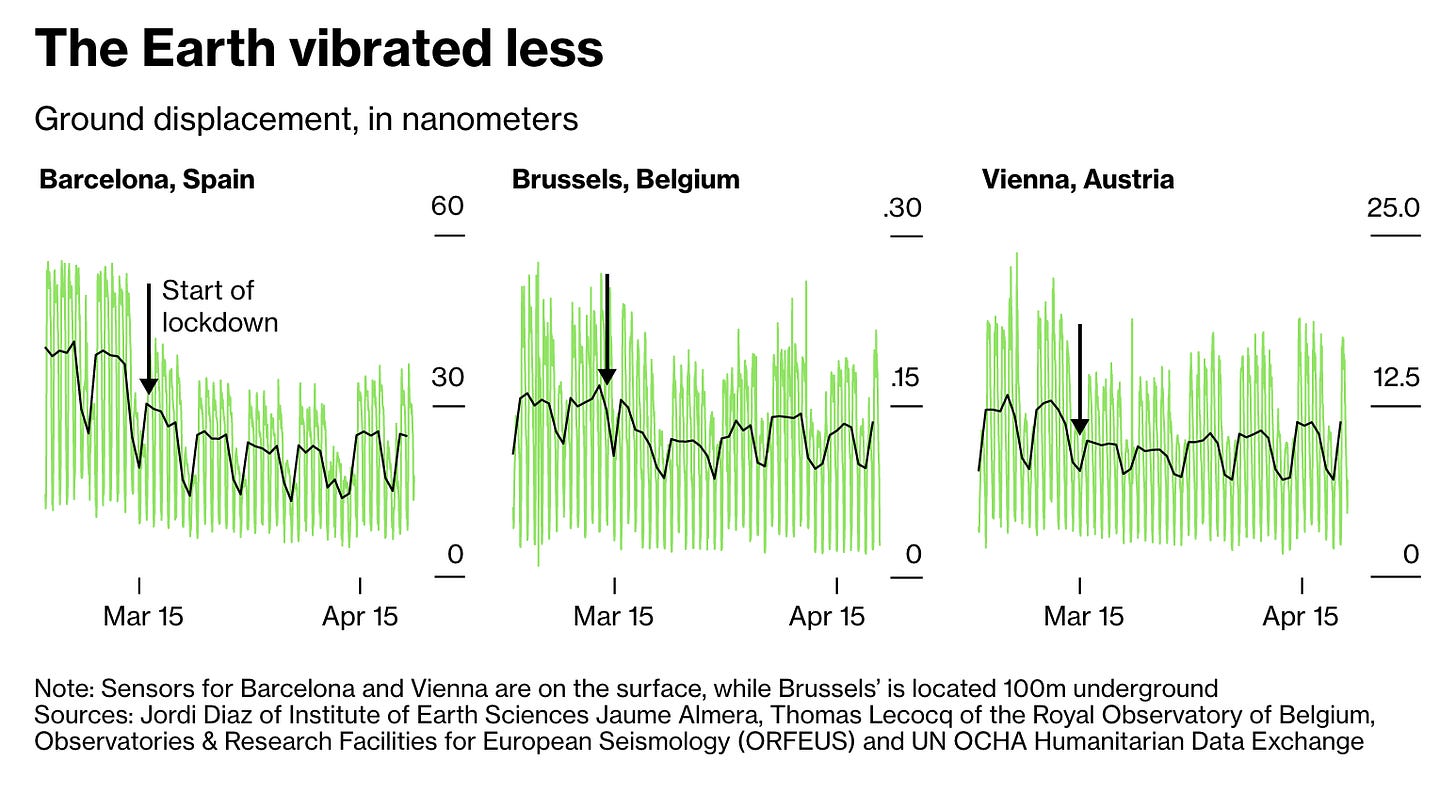Why is this interesting? - The Transmission Edition
On complexity, Pace Layers, and keeping the economy out of alignment
Noah here. Complex systems are, unsurprisingly, hard to understand. That’s because you’ve got a ton of different elements interacting and affecting one another. Those loops on loops are what makes complexity a completely different beast than complicatedness. That independence is also, by and large, what makes systems that work this way far more robust than their simple counterparts. If there was one pin you could easily pull out of the economy or the internet and have everything fall over, then it would have long been pulled by now.
Our bodies work similarly. Part of what makes cancer so hard to deal with is that there isn’t just one cause. Rather, a multitude of genetic, behavioral, and environmental factors come together with varying predictability and harmfulness. As a result, it’s hard to treat: a complex system attacking a complex system. While that’s a terrible truth if you have cancer, it’s generally what keeps us alive. As David Krakauer explains in a fantastic episode of the Santa Fe Institute’s Complexity podcast, “Our body doesn't want to give one lever or one switch that controls the entire system to one function or one disease because it collapses the complexity into simplicity, and it allows for the possibility of complete disruption with a single point of change. So complexity is actually what we would call homeostatic. It's a good thing, it's hard to understand, but it means [it] is much harder to hijack.”
So what’s going on with COVID-19? How is this relatively simple virus not just taking down people, but bringing with it whole industries and economies? Here’s Krakauer again:
Unlike with these other diseases, in the case of COVID-19 there is a rather unique convergence of causes that reestablishes a kind of simple causality, and these causes are transmission networks. The virus is transmitted initially from animal hosts to humans, typically through diet. Humans then transmit the virus to other humans by contact. These contacts are then transmitted through our transport systems and professional and social lives. This is perhaps the principal reason why the markets and society have been so volatile; the shared factor of transmission is so integral to modern life, it is to such a great extent the foundation of the modern world, that it touches nearly every factor of production. Just as monocultures can generate lethal simplicity in agriculture, transmission has generated lethal simplicity across the globe.
Why is this interesting?
When I heard this my mind immediately jumped to Stewart Brand and Brian Eno’s Pace Layers framework.

Originally inspired by a similar model for how buildings work by architect Frank Duffy, the key concept is that the world is made of these different layers which all move at different speeds. While they’re generally independent, they also interact with one another, ingesting the concepts that last and embedding them a level deeper. Here’s how Brand explains it:
Each layer is functionally different from the others and operates somewhat independently, but each layer influences and responds to the layers closest to it in a way that makes the whole system resilient.
From the fastest layers to the slowest layers in the system, the relationship can be described as follows:
Fast learns, slow remembers. Fast proposes, slow disposes. Fast is discontinuous, slow is continuous. Fast and small instructs slow and big by accrued innovation and by occasional revolution. Slow and big controls small and fast by constraint and constancy. Fast gets all our attention, slow has all the power.
All durable dynamic systems have this sort of structure. It is what makes them adaptable and robust.
To me, Krakauer and Brand are talking about the same ideas, with Krakauer offering a kind of addendum to the Pace Layers concept. Specifically, he’s saying one of the key mechanisms we use to keep all these layers moving is to align a small bit of them around transmission. So while they’re largely all moving at different speeds, we take this vertical slice and make them move in unison so that we can transport people and goods around the planet. What makes this virus so powerful, as Krakauer points out, is that it happens to tap into this same mechanism.

So are we all doomed? Did it figure something out that we can’t fix? It doesn’t seem that way. Clearly, moving forward we will have to think about the kinds of changes needed to make the system more robust in these areas. We will likely need “engineered misalignments” to ensure it can hold up against future threats like COVID. For now, though, we did this miraculous thing to kick the whole thing back out of alignment: we all went inside. Here’s Krakauer one last time:
Quarantine and social isolation are actually collaboration in this world; by staying home, you're not just hiding from the menace, you're actively participating in misaligning one element of this complex system, so as to interfere with the progress of the infection. So this idea somehow that a citizen could actually play a part that was as important as a vaccine, but instead of preventing transmission of the virus into another cell at the ACE receptor level, it's preventing transmission of the virus at the social network level. So we're actually adopting a kind of behavioral vaccine policy, by voluntarily or otherwise self-isolating. I think it's a very important point for everyone to understand, and I actually argued in that article that everyone should be awarded some fraction of the Nobel Prize in Medicine for the sacrifices they're making in order to minimize the transmission.
Do yourself a favor and go listen to the episode and the whole podcast. Krakauer is an incredible thinker and it’s a treat to have him summarizing the work of brilliant people.
And thanks for helping to keep things out of alignment for awhile. (NRB)
Chart of the Day:
From Bloomberg: “In cities, the effect of billions of humans at standstill has become evident in the Earth’s crust. Movements from everyday human activity create countless tiny vibrations in the ground. Seismometers close to or inside urban areas have registered reductions in movement.”

Quick Links:
Angela Lansbury as teapots via RPB (NRB)
The coming disruption to college (CJN)
Thanks for reading,
Noah (NRB) & Colin (CJN)
—
Why is this interesting? is a daily email from Noah Brier & Colin Nagy (and friends!) about interesting things. If you’ve enjoyed this edition, please consider forwarding it to a friend. If you’re reading it for the first time, consider subscribing (it’s free!).


